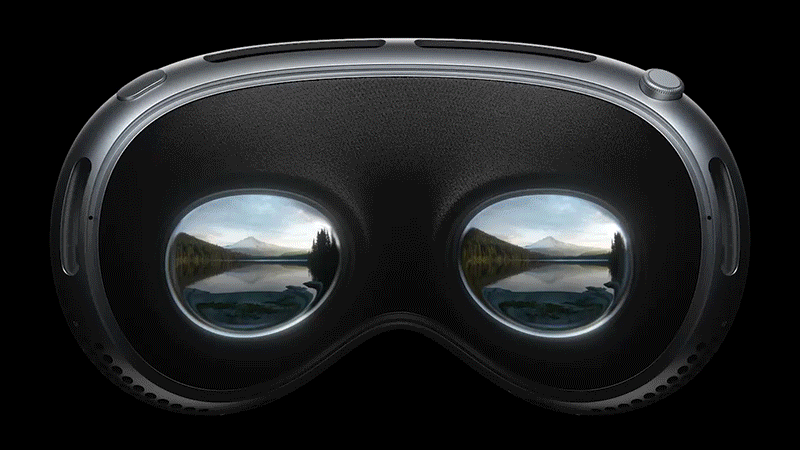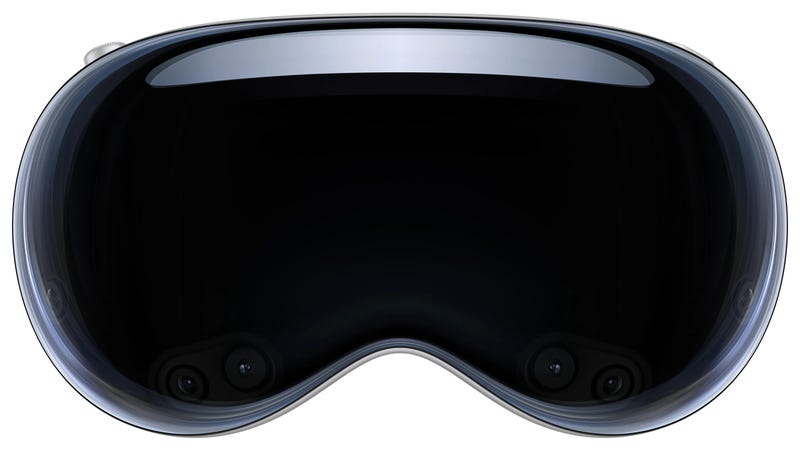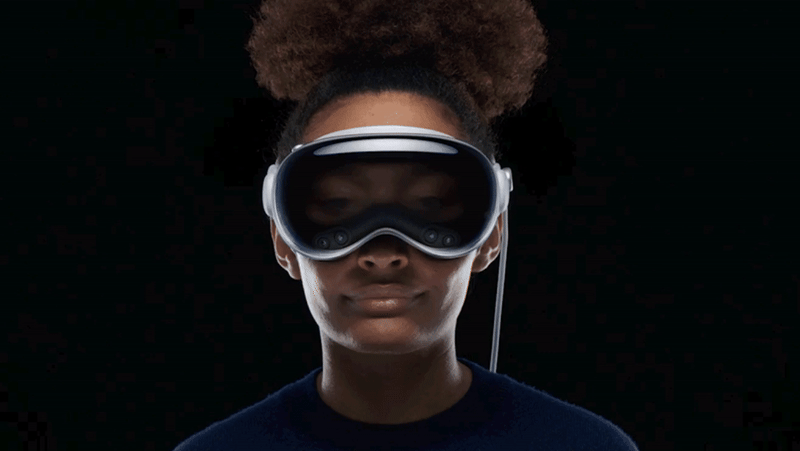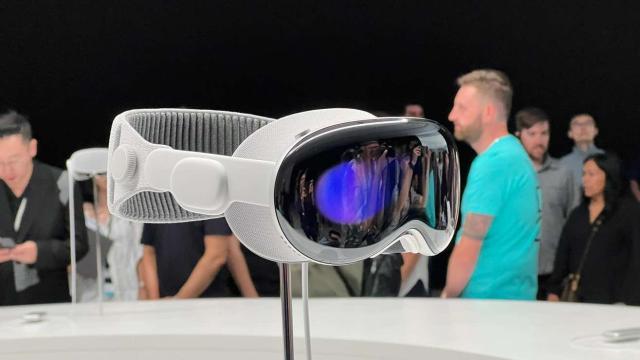Apple’s Vision Pro is set to wander its way into a few lucky Apple megafans’ living rooms starting Friday, but if you were a bit late to jump on the “spatial computing” hype train, there’s still time to get yourself one of the upcoming $US3,500 headsets.
Buying a Vision Pro is a bit more involved than your usual Apple release, not just because of its massive upfront cost for a consumer-level device. Apple has added a few more hoops to jump through to order one. Not to mention, you may find the number of apps to start rather limiting, even if the hardware has plenty of processing power, offering small yet notable innovations to the VR genre.
How Long Will I Have to Wait for an Apple Vision Pro after I Preorder?
With preorders already underway for the past weeks now, you should know straight off that it will take you a fair bit longer to get your hands on a Vision Pro, especially if you’re ordering online. If you try to order one now, the one store tells you you’ll need to hold out until early March. Picking it up in a physical Apple Store should simplify the waiting process, as pickups are available on February 2.
However, that may depend on availability at your local retailer since the Apple Vision Pro is currently sold out at most places.
There are three versions of the Apple Vision Pro available. The starting $US3,500 version comes with 256 GB of internal storage. The next 512 GB edition costs $US3,700. If you want to nab a Vision Pro with 1 TB of internal storage, expect to pony up $US3,900. There’s the option to finance your purchase with 0% APR through an Apple Card, which is only available when you go through the Apple Store.
There’s also a lot more involved in purchasing a headset than there usually is when trying to tell Apple to “shut and take my money.” When you first hit up the Vision Pro purchase page, Apple directs iPhone and iPad users to its App Store, which will prompt you to perform a face scan. After that, you need to return to the Apple store page, where the company will ask if you need any prescription glasses inserts provided by Zeiss.
Those who were keen to get their hands on a Vision Pro have already led to an estimated 160,000 to 180,000 preorders so far. That’s not a lot compared to the usual iPhone release, but remember, this is a $US3,500 headset. The upfront cost to build these devices has most analysts thinking Apple wants to ship far fewer Vision Pros than it does its other products, and currently, most expect Apple will only ship about 500,000 Vision Pros this year.
Still, there’s not much impetus for going in early on a new headset. Limited supply might make it harder to procure a Vision Pro in the future, though that’s only if the headset proves far more popular than even Apple anticipated. Considering what most folks who have had the chance to test the device have said, you’re probably safe taking a wait-and-see approach.
What Are the Specs of the Vision Pro?

The Vision Pro is akin to other enterprise-level VR headsets, though with a fair bit of Apple’s own flair thrown into the mix. First, the headset is powered by Apple’s 8-core M2 Chip with an additional 10 GPUs and a 16-core “neural engine” to handle various AI tasks. The chip boasts 16 GB of integrated memory.
The next most important thing for most users is the Vision Pro’s displays, and these are already a doozy. They’re two 4K micro-OLED displays sporting refresh rates up to 100 Hz. The headset also boasts a wide array of cameras, some for its eye-tracking capabilities and others meant to understand your hand gestures. The Vision Pro uses a user’s biometric data—their eyes, in this case—to unlock the device when slipping it on.
The other sensors situated around the headset are meant to capture the space in front of users, including two main cameras, six tracking cameras, a LiDAR scanner, and a “TrueDepth” camera. The headset also has a built-in audio system for spatial audio no matter where your head is pointing, though you can connect a pair of AirPods Pro to the device for better sound closer to your ears.
What Do We and Others Think About the Vision Pro?

It seems everybody’s got their own opinion about the Vision Pro, even those who haven’t had the chance to use it yet. There’s a fair bit of murmuring among the top tech brass, wondering if Apple can really revitalize the flagging VR space with its ultra-premium device. Netflix’s co-CEO Greg Peters went as far as to call it “subscale” in a recent interview.
Former Gizmodo editor Dan Ackerman described the Vision Pro’s augmented reality passthrough capabilities as some of the best in the VR field, partially thanks to the headset’s twin 4K lenses. It’s certainly more capable than the $US500 Meta Quest 3 (though at seven times the cost). However, just like most VR goggles, you’ll never tune out and forget you’re wearing this Apple-brand headset. First, because there will always be a bit of an uncanny valley to the proceedings, and because you can litter your field of view with app icons like you would on desktop space, though with much more fidelity and choice of where your apps can go. Everything is controlled by hand gestures rather than controllers, and one of the most consistently praised aspects of Apple’s latest device is its rather seamless gesture recognition tech.
It’s a rather large headset, and some other users have complained about its weight distribution when settled on their foreheads for any length of time. It’s clear Apple had to make several concessions for the Vision Pro’s high-fidelity internal screens and both the internal and external cameras. To reduce weight, the company, at the end of 1 Infinite Loop, took the rechargeable battery pack off the device and connected it via a wire. The battery is supposed to sit in your pocket during use, so while this is ostensibly a “wireless” VR headset, you might still have to swat away a pesky cord during use.
Folks who have used it found that the Apple-brand M2 processor is up to the task of running all the various apps running on it but questioned just how usable it is. Some also complained of discomfort and overall bulk for a device that’s supposed to be a replacement, or at least a compliment, to your regular workspace devices. Wired also pointed out how everyone allowed to use the headset in the last few weeks was doing so sitting down, giving the impression that Apple wants you to use its headset from a comfortable position where the external battery won’t be as much of a bother.
What Apps Will Be Available to Start?

There are several mainstay apps that won’t be making it to the Vision Pro at launch. If you buy one now, don’t expect to access your YouTube, Spotify, or Netflix accounts except through the Safari browser. All those apps have decided to skip Apple’s latest launch, likely because they don’t know if it’s worth building an app to work with Apple’s visionOS and gesture-specific controls if there aren’t too many people actually using it.
Apple is filling in most of the blank spaces for its upcoming headset. Apple includes Vision Pro-specific versions of its apps like FaceTime (with the ability to create a 3D deepfake of you to chat with your friends), Safari, Freeform, Keynote, Mail, Messages, Music, Notes, Photos, and more available pre-installed. The Encounter Dinosaurs AR experience works more as a tech demo for the headset’s 3D capabilities rather than anything you can expect to spend your time on months down the road.
The other major 3rd-party apps fit into the realms of passive entertainment and productivity. The likes of Disney+, Max, Paramount+, and the now-ad-filled Amazon Prime Video will be available at launch. Also, you’ll be able to browse your feeds in a Vision Pro-specific TikTok app. Otherwise, Microsoft is bringing its 365 suite to the Vision Pro, while Slack and Zoom will make sure you won’t be able to avoid your boss, even when you try to duck inside Apple’s headset.
On the flip side, Apple has effectively ported over every single iOS and iPadOS app to the Vision Pro—or at least all those apps from developers who didn’t opt out in time. These apps won’t have any real “spatial” capabilities but will instead work on a 2D field like they would on a MacBook. Also, users will be able to mirror their iPhone, iPad, Apple TV, or MacBook screens on a Vision Pro, which may be the only way to access certain games or programs not available to the headset natively.
What Will Apple Add to the Vision Pro in the Future?

Apple will likely support its visionOS with updates after launch. Still, other than making even more of its own apps spatial-specific, such as Calendar, Maps, and Voice Memos, the company could have more health and wellness capabilities in store. Those digging into the software for the Vision Pro’s on-device sensors show Apple could, theoretically, offer mental health diagnoses through its headset.
Apple also has its M3 chip currently on the market for its latest MacBooks. It would only make sense if future releases were upgraded to the newer chip. While the next Vision Pro could be far cheaper than the current version, it might offer different price points for the regular M3, M3 Pro, and M3 Max chips.
But any new capabilities coming to the $US3,500 headset belies the obvious fact that this is nowhere near the final version of Apple’s AR dreams. The Vision Pro is a big, expensive AR tech demo. Future versions will necessarily need to be far cheaper if they want to reach a wider audience. CEO Tim Cook explicitly wanted a pair of AR glassesrather than a headset. Instead of the former, he was forced to settle on the latter with an external screen showing the user’s fake eyes in an attempt to not isolate people from each other.
Apple doesn’t like compromises, and the Vision Pro—with its external screen and battery pack—is full of them. Just know that if you buy the $US3,500 headset now, you’re acting as a test dummy for Apple’s VR ambitions. Nothing is necessarily wrong with that, but you shouldn’t expect anything more than a big budget roadmap for Apple’s VR ambitions.
While you’re here, why not check out our daily tech deals, our guide to the best value for money NBN plans, and info on the latest phones from Apple, Google, and Samsung. Head to our dedicated Mobile tab for more.
